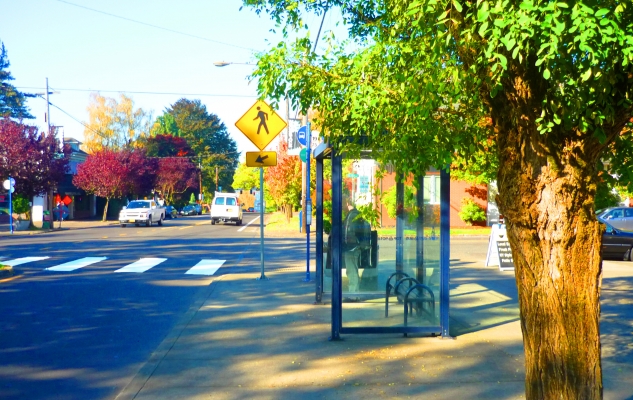OTREC researchers develop livability metrics for public transit

The U.S. Department of Housing and Urban Development has identified some “livability principles” which include healthy, safe and walkable neighborhoods and safe, reliable and economical transportation choices.
Transit agencies and local governments routinely use metrics to evaluate the performance of transit systems, but a uniform standard of transit data collection does not exist outside of the reporting requirements of the National Transit Database (NTD). Because of the types of data collected for the NTD, the focus of performance measurements is often on ridership and financial performance, leaving aside the question of livability.
In a new project sponsored by OTREC, Principal Investigator Marc Schlossberg, associate professor in the department of planning, public policy and management at the University of Oregon, along with co-investigators Jennifer Dill of Portland State University and Nico Larco, also of the University of Oregon, set out to create a set of tested and refined performance indicators that transit agencies across the nation can use to evaluate and improve their system performance in relation to livability goals.
Traditionally, transit systems are thought of exclusively in their wholeness: how the system serves a region, city or community. In order to evaluate the quality and accessibility of transit from a livability perspective, researchers developed some micro-scaled measures of very localized conditions. These measures evaluate the ability for individuals to access individual points along the system.
Investigators developed spatial indicators using geographic information systems (GIS). They conducted a regression analysis linking those indicators to ridership at the stop level. Three metropolitan regions in Oregon were included, representing a range of sizes and characteristics: TriMet (Portland), Lane Transit District (LTD), and the Rogue Valley Transportation District (RVTD).
Using the regression analysis results, researchers identified approximately forty stops that had unexpectedly high or unexpectedly low ridership for further investigation. They printed an aerial photo and street map of the area for each of these stops and visually examined the neighborhood’s connectivity, along with physical or spatial barriers that might prevent a pedestrian from reaching the transit stop easily. They also looked at the density of the surrounding area, and for any competing stops in close proximity.
In the urban form analysis, researchers found some potential barriers that can separate transit stops from the surrounding environment. These included freeways and other large roadways, city block structures that limit more direct access, walls that separate distinct land uses and limit pedestrian connectivity, and parking lots that create “virtual barriers” by creating unpleasant pedestrian environments. With such design, it is likely that only captive riders, rather than choice riders, would use transit.
Based upon these research findings, investigators identified three transit livability indicators that should be measured: transit quality, the built environment, and destinations (pedestrian-oriented destinations within one-quarter mile of each transit stop).
The investigators identified three key policy areas where both transit agencies and local or regional governments could bring about a more transit-supportive urban form. First, service frequency is clearly important. Holding all else equal in terms of urban form, transit ridership increases when transit service increases. Second, clustering of density and destinations at transit stops is important. The models developed from this research can be used to prioritize locations for changing land use based upon desired transit ridership. Third, connectivity is important, as measured both by GIS analysis of existing networks and urban form analysis of connectivity barriers. In terms of connectivity, researchers identified one overall area of importance: the area immediately adjacent to a transit stop must be pedestrian-friendly. Most transit users are pedestrians at the beginning and end of any transit trip. Therefore, focusing on the walkable zone around each transit stop was important.
